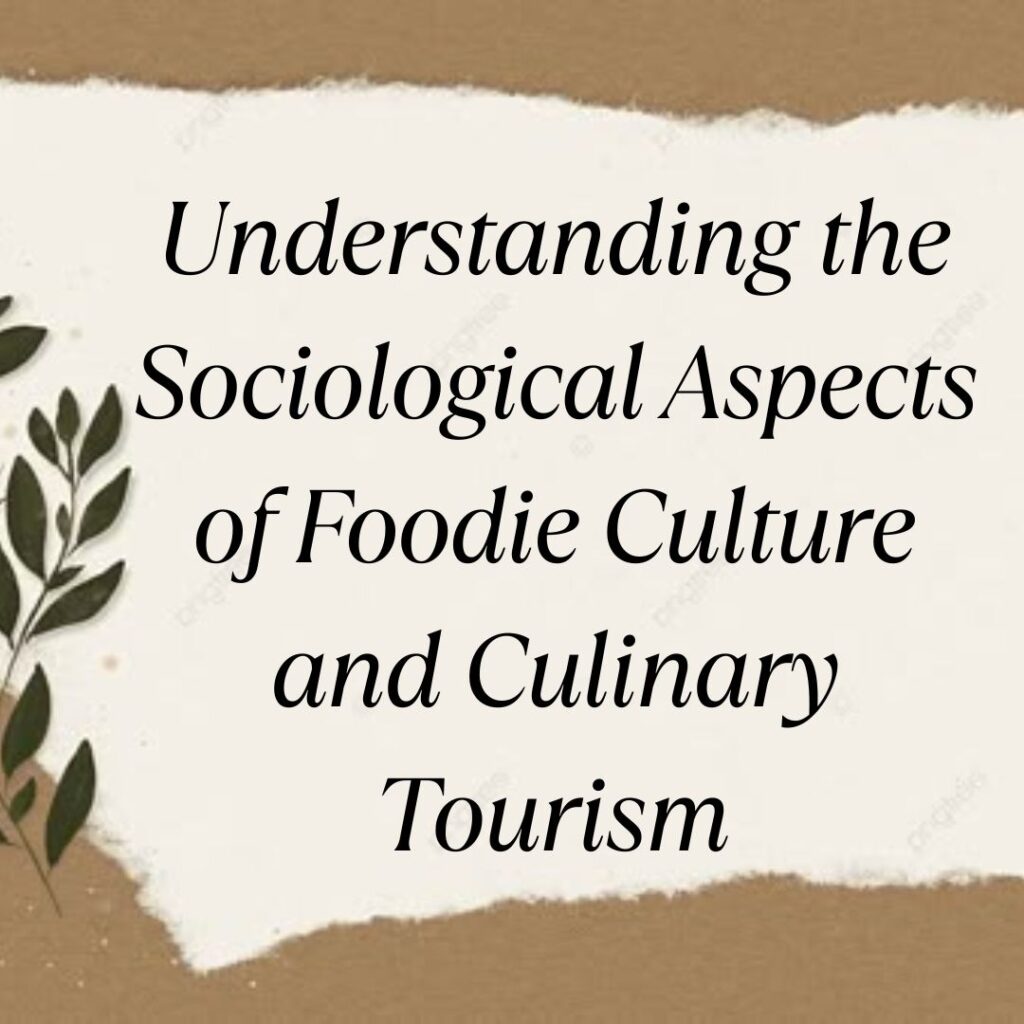Food has always been more than just sustenance; it is a cultural phenomenon that shapes identities, communities, and economies. In recent decades, the rise of foodie culture and culinary tourism has transformed how people experience and perceive food. This article delves into the sociological aspects of these trends, exploring their significance, impact, and relevance in contemporary society.
Exploring Foodie Culture
Foodie culture refers to the phenomenon where individuals not only appreciate food but also immerse themselves in its creation, consumption, and cultural significance. It goes beyond mere enjoyment of flavors to encompass a deep interest in the origins, techniques, and stories behind food.
Cultural Identity and Food: Food plays a crucial role in shaping cultural identities. Different cuisines reflect historical influences, geographical landscapes, and social practices of communities. For instance, the rich spices in Indian cuisine or the emphasis on freshness in Mediterranean diets are reflections of cultural heritage and environmental contexts.
Social Media and Foodie Identity: The advent of social media has amplified foodie culture, turning culinary experiences into shareable moments. Platforms like Instagram and TikTok are filled with food enthusiasts sharing aesthetically pleasing dishes, hidden gems of eateries, and food trends. This digital sharing not only promotes culinary diversity but also fosters global food appreciation.
Economic Impact: Foodie culture has significant economic implications. It drives restaurant trends, influences food markets, and promotes culinary tourism. Cities and regions with unique food cultures often see increased tourist traffic seeking authentic dining experiences. This influx boosts local economies, supports small businesses, and preserves culinary traditions.
Culinary Tourism: A Cultural Exploration
Culinary tourism involves traveling to explore the food and drink of a region. It blends cultural immersion with gastronomic experiences, appealing to travelers seeking authentic encounters beyond traditional sightseeing.
Destination Branding: Many destinations strategically use their culinary offerings to differentiate themselves in the tourism market. For example, cities like New Orleans are renowned for their Creole cuisine, attracting visitors eager to taste gumbo and jambalaya while experiencing local music and culture.
Community Impact: Culinary tourism often benefits local communities by promoting cultural heritage and preserving traditional cooking methods. By patronizing local eateries and markets, tourists contribute directly to the livelihoods of food producers and culinary artisans, fostering community pride and sustainability.
Sustainability and Food Tourism: As global awareness of sustainability grows, so does the focus on sustainable food tourism practices. Travelers increasingly seek experiences that support ethical food production, reduce food waste, and promote local biodiversity. Farm-to-table tours and eco-friendly cooking classes are examples of sustainable culinary tourism initiatives gaining popularity.
Relevance in Contemporary Society
In today’s interconnected world, foodie culture and culinary tourism serve as bridges between cultures, generations, and social classes. They promote understanding and appreciation of diverse culinary traditions while fostering social cohesion and shared experiences.
Health and Wellness Trends: The rise of health-conscious consumers has influenced foodie culture, leading to trends like plant-based diets, organic farming, and mindful eating practices. Culinary tourism responds by offering healthy dining options and wellness-focused culinary experiences, catering to evolving consumer preferences.
Technology and Innovation: Advancements in technology have revolutionized foodie culture and culinary tourism. From food delivery apps that bring global cuisines to your doorstep to virtual cooking classes that connect chefs with international audiences, technology has expanded access to culinary experiences and knowledge.
Cultural Exchange and Integration: Food has a unique ability to transcend language barriers and cultural differences, making culinary tourism a powerful tool for cultural exchange and integration. By sharing meals and stories, travelers and locals forge connections that promote mutual understanding and appreciation.
Conclusion
In conclusion, foodie culture and culinary tourism are not just trends but reflections of our evolving societal values and interconnectedness. They celebrate diversity, promote economic growth, and preserve cultural heritage. As we navigate an increasingly globalized world, these aspects of food and travel continue to shape how we experience and understand our shared human experience through the universal language of food.
This exploration of the sociological aspects of foodie culture and culinary tourism illustrates their profound impact on individuals, communities, and societies worldwide. By embracing and celebrating culinary diversity, we enrich our lives and create lasting connections that transcend borders and generations.







